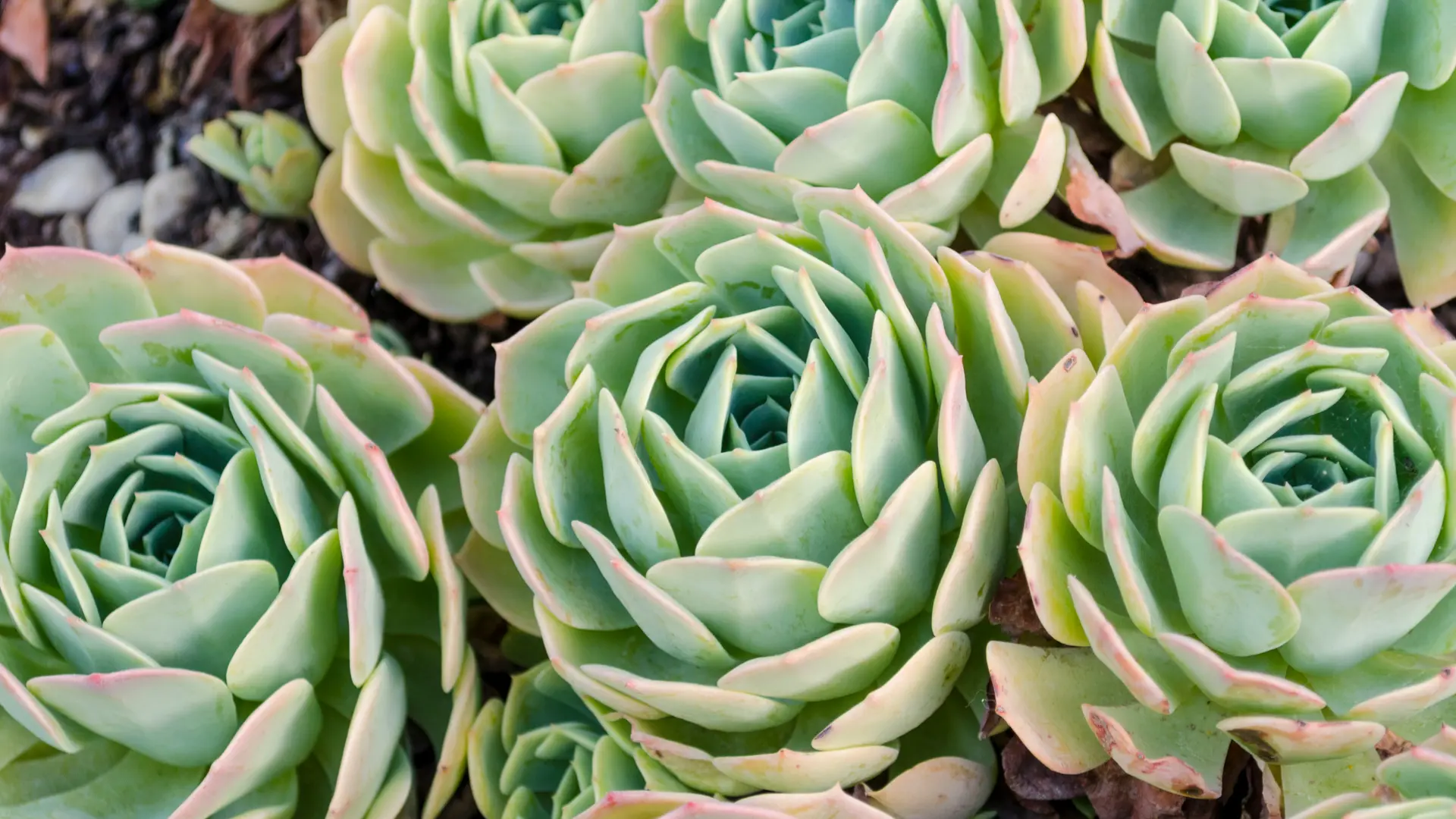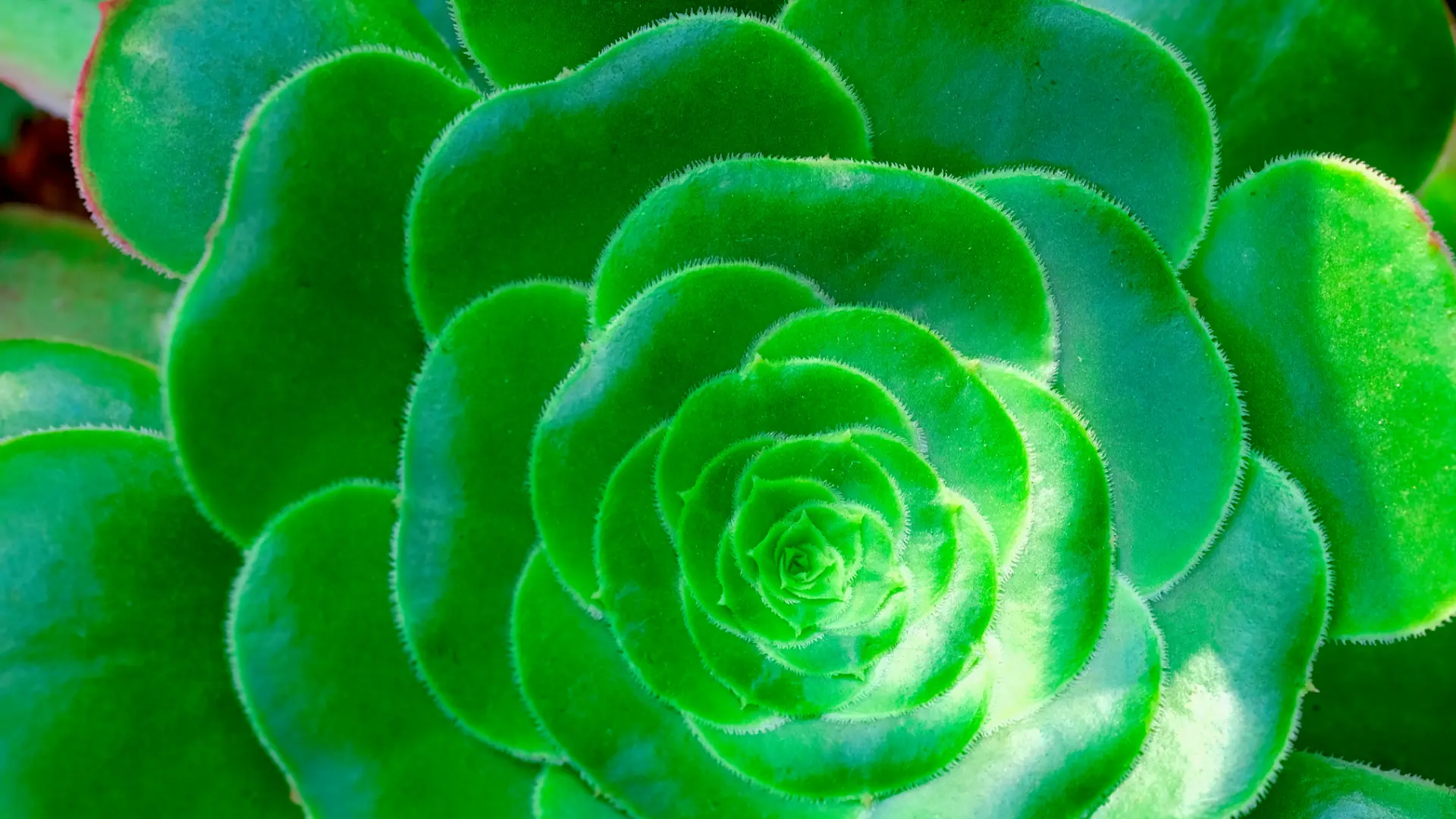At a glance
Common Name: Saucer Plant
Scientific Name: Aeonium urbicum
Native Region: Canary Islands, North Africa
Lifespan: Perennial
Plant Type: Succulent
Size: Height: 2–6 feet, Spread: 2–4 feet
USA Planting Zones: 9–11 (Thrives in warm, frost-free regions)
Soil Requirement: Well-draining, sandy or loamy soil; pH 6.0–7.5
Water Requirement: Low; drought-tolerant but prefers occasional deep watering
Sun Exposure: Full sun to partial shade
Foliage Color: Bright green with occasional red or pink-tinged edges
Foliage Season: Evergreen in warm climates
Flower Color: Pale pink to white
Flower Season: Late spring to summer
Fruit: Not typically cultivated for fruit
Fruiting Season: Rare, following the flowering season (if at all)
Wildlife: Attracts pollinators like bees and butterflies
Introduction
The saucer plant is an attractive succulent known for its green leafy rosettes This green saucer-like plant can produce a reddish glow when exposed to sunlight, which looks very attractive. This unique drought-tolerant plant from the United States is a favorite among gardeners.
It can grow beautifully in the limited space of your garden, and one of the reasons for this plant’s popularity is its unique appearance and easy care. This guide will help you grow a healthy and thriving saucer plant.
Saucer plant, or Aeonium urbicum, belongs to the Crassulaceae family. This plant is essentially a winter plant that grows well in autumn and winter and remains dormant in the summer, requiring a lot of care. Proper care makes the tree a unique plant in your garden.
Requirements of growing Saucer Plant
Light requirements
Saucer plants thrive in bright, indirect sunlight, but they can tolerate full sun, especially in winter weather, but they remain dormant most of the time during the summer months. If you want to grow these plants inside your home, place them in a spot that gets light sunlight from a window, as these plants can thrive even in light sunlight.
Southwest windows are the best place to grow indoors. And if you want to grow plants outside, make sure they get at least four to six hours of sunlight a day.
Weather
The saucer plant prefers temperatures of at least 18 to 24 degrees Celsius. They can survive mild winters well but should be protected from frost. If the temperature outside your home is below 30 degrees Fahrenheit, bring the plants indoors and use green lights.
Soil
Drainage of soil is very important for good growth of saucer plants and prevention of root rot. You can get some soil from those who grow Saucer plants commercially, or you can make it yourself. Needed for mixing:
- 1 part perlite
- 1 part rough sand
A large, well-draining pot is essential to help the plant grow well.
Planting in the right way
It is very important to know the correct planting method. If you do not do this correctly, the tree will not grow, and its roots will rot, and both your time and effort will be wasted. Saucer plants can be planted both in pots and in the ground, and the planting method is different in both places:
Plant in a pot
- Choose a container with good drainage holes.
- Fill the pot with a well-draining soil mix.
- Cover the seedling gently with soil.
- Water it regularly.
Planting in the ground
- If you have space in your garden, you can also plant this plant in the ground. Choose a sunny and well-drained spot for this.
- Dig a slightly larger hole.
- Gently place the plant in the hole and backfill with soil.
- Water it regularly.
Propagation
Saucer plants can be propagated by cuttings or seeds.

Cutting the stem
- Use a clean, sharp knife to cut the stem.
- After cutting the stem well, let it dry thoroughly until the pitcher is formed.
- Plant it in dry, well-drained soil.
- Water lightly every few days.
Seeds
- Sow the seeds in a well-mixed soil and find a bright, warm, and misty area.
- It may take several weeks for germination to occur.
Watering and fertilizing
One more thing you need to do responsibly to grow a saucer plant well is to provide it with adequate water and fertilizer.
Watering
- The watering needs of this plant vary according to the season.
- In winter, water very little or only once or twice a week. Regular watering in winter can cause the roots of the plant to rot.
- Water regularly during the summer to avoid overwatering.
Give your Saucer Plant a “Sun Vacation.”
Your Saucer Plant loves the sun, but just like us, it can get a little sunburned. If you live in a super-hot state like Arizona or Texas, morning sun and afternoon shade will keep its leaves lush and green without those crispy edges. In cooler zones, full sun all day is perfect!
Fertilizer
- Providing good quality and adequate fertilizer is an essential part of this plant’s growth.
- Apply a balanced fertilizer once per season; avoid fertilizing during dormancy.
Maintenance
Maintenance of this plant is very easy; regular watering, a sunny location, and balanced fertilizer application help the plant grow healthily and quickly.
Layoff
Pruning dead leaves and unruly branches once a season can encourage healthy growth.
Also, pruning as needed ensures even growth of the tree.
Pests and disease control
Saucer plants are generally pest resistant, but occasionally they are susceptible to the spread of several types of diseases.
- To prevent such plant pests, there are several types of insecticidal soaps or neem oil available in the market.
- Avoid overwatering and ensure proper drainage to prevent root rot.
- Improve air circulation and avoid excess humidity to prevent fungal infections.

Conclusion
Growing a saucer plant at home can be a rewarding experience for you. You can grow it well both indoors or in your garden. This plant is very easy to maintain and care for. Proper water, soil, and light can help this plant grow easily. This is a very beloved and rare plant in the United States that can enhance the beauty of your garden. With minimal maintenance, this majestic and succulent plant can adorn your garden for years to come.
